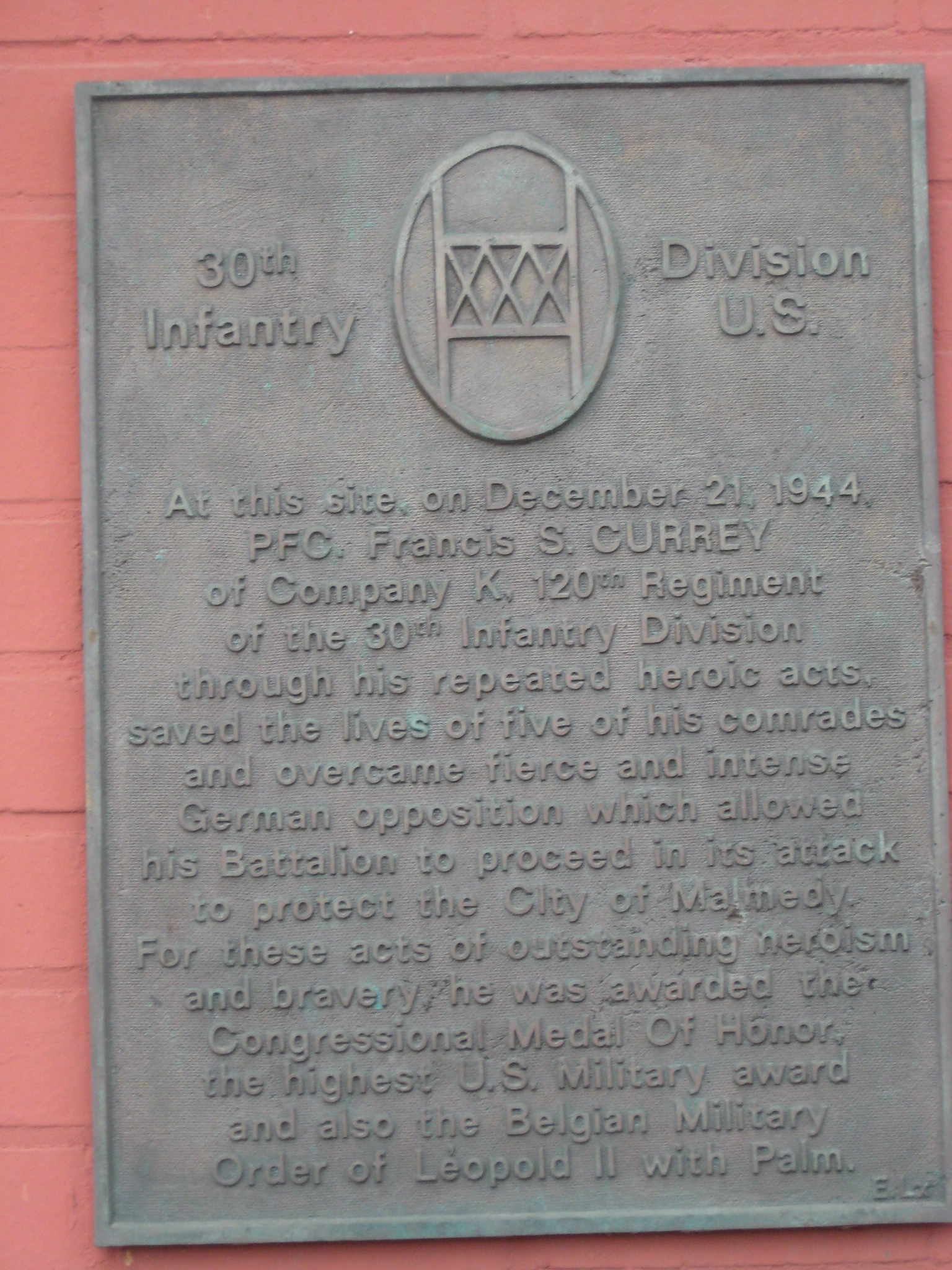Introduction: For Americans, the two most-visited European battlefields are Normandy and the Ardennes. On this 76th anniversary of the beginning of the Ardennes Offensive and in preparation for our September 2021 Ardennes Offensive Tour German historian and tour guide Markus Klauer compared the Medals of Honor awarded during both offensives. His findings are given below:
For weeks, both battlefields were the focus of the Allied and German High Commands, and the fighting in both areas was decisive in the final phase of the Second World War.
It astonishes that during the fighting in Normandy, “only” 14 Medals of Honor were awarded to Army soldiers. This contrasts with 21 during the battle in the Ardennes. (In comparison, 53 Medals of Honor were awarded during the 47-day Meuse-Argonne Offensive of WW1.)
In the following comparative reflection, I consider the battle in Normandy lasting from June 6th to July 31st, 1944. After that, the Allied forces managed to break out of the Normandy area. For the Battle of the Bulge, I limited myself to the period from December 16, 1944 to February 1, 1945. On that day, the soldiers of the Wehrmacht were roughly in the position from which the offensive had started. This means that the fighting took place for 56 days in Normandy and 48 days in the Belgian and Luxembourg Ardennes (85% of the days of fighting in Normandy).
At first glance, the contested space also appears to be roughly the same size. However, in the Ardennes one has to calculate this area twice – first the Wehrmacht attacked and took this area into their hands and then the Allies (85% of them were US troops) fought back and recaptured the lost area.
Statistically, every fourth day in Normandy a soldier has been successfully recommended for the Medal of Honor. In the Ardennes, this happened after every two days and eight hours or so. Meaning this happened almost twice as often in the Ardennes as in Normandy. It must be considered that the combat-intensive phase of the Ardennes offensive—holding off the Wehrmacht’s offensive—lasted until around December 26th, 1944. In this period of only 11 days, 13 recommendations for the Medal of Honor were accepted. So more than one award per day! Four soldiers were decorated for the fighting during the first two days. This then corresponds to 19% of the total number. The fighting in Normandy cannot easily be divided into attack and defense. However, on the first day of the operation, four soldiers were honored for their achievements, yet not a single one was awarded on June 7th. Significantly, the four awarded on June 6th represent 28% of the total number of awards that were given in Normandy.
At the beginning of the two periods there was an almost comparable number of combatants on the American side. Six powerful divisions in Normandy represented almost the same strength as large parts of nine divisions that saw action during the first day of the Battle of the Bulge on December 16, 1944. However, the numbers diverge more clearly at the end of the two respective periods. Here 20 US divisions in Normandy are compared to 32 in the Ardennes. Nonetheless, there are no reliable figures of combatants as of July 31, 1944, and also not as of February 1, 1945. So here only the number of divisions remains as a further basis- there is an average of 0.7 successful medal recommendations for each division in Normandy. In the Ardennes, the percentage is very similar at 0.65.
The numbers of posthumous awards of the Medal of Honor are again significantly different. During the Normandy fights, 10 of the 14 awards were given posthumously, which means 71% and suggests the high intensity of the fights until the medal was awarded. In the Ardennes this was only eight out of 21 and thus “only” 38%.
The distribution to the respective military branches, on the other hand, shows a fairly uniform picture. In Normandy, infantry accounted for 11 out of 14 – so 79%. The other three awards went to members of paratroopers (including glider infantry). In the Ardennes, 14 infantry and armoured infantry units accounted for 66% of the awards. Of the rest, 3 were awarded to paratroopers, 4 to engineer and reconnaissance units and 2 to tank destroyer units.
It is also interesting to look at the distribution among the various ranks. In total, 17% of the 35 awards are allocated to officers, 60% to NCO ranks and the remaining 23% to other ranks. However, this is clearly different comparing the two theatres and battles. Not a single officer has been awarded during the Battle of the Bulge. In return, the proportion awarded to NCOs is 76%. From this one could deduce that either the number of military leaders decreased significantly in the winter of 1944/45 in the US units, and or that the NCOs had spontaneously taken over significantly more of the officers’ duties in the course of the fighting.
In summary, one can say that the chances of being awarded the Medal of Honor are greatest when the US troops are in defense, especially in the first days of an adversary offensive. If one is an NCO, serves in the infantry and pays for his courage with his life the probability increases significantly. As the years pass, the number of living WW2 Medal of Honor recipients has dwindled. One Wikipedia article suggested that 9 of 80 living MOH recipients were WW2 Veterans; but a closer look at the names suggested that only 4 were still living.

Sources
World War II
https://en.wikipedia.org/wiki/Operation_Overlord
https://en.wikipedia.org/wiki/List_of_Medal_of_Honor_recipients_for_World_War_II
#kneedeepintohistory #meuseargonne #ww1tours #ww2tours #battlefieldtours

Leave a Reply